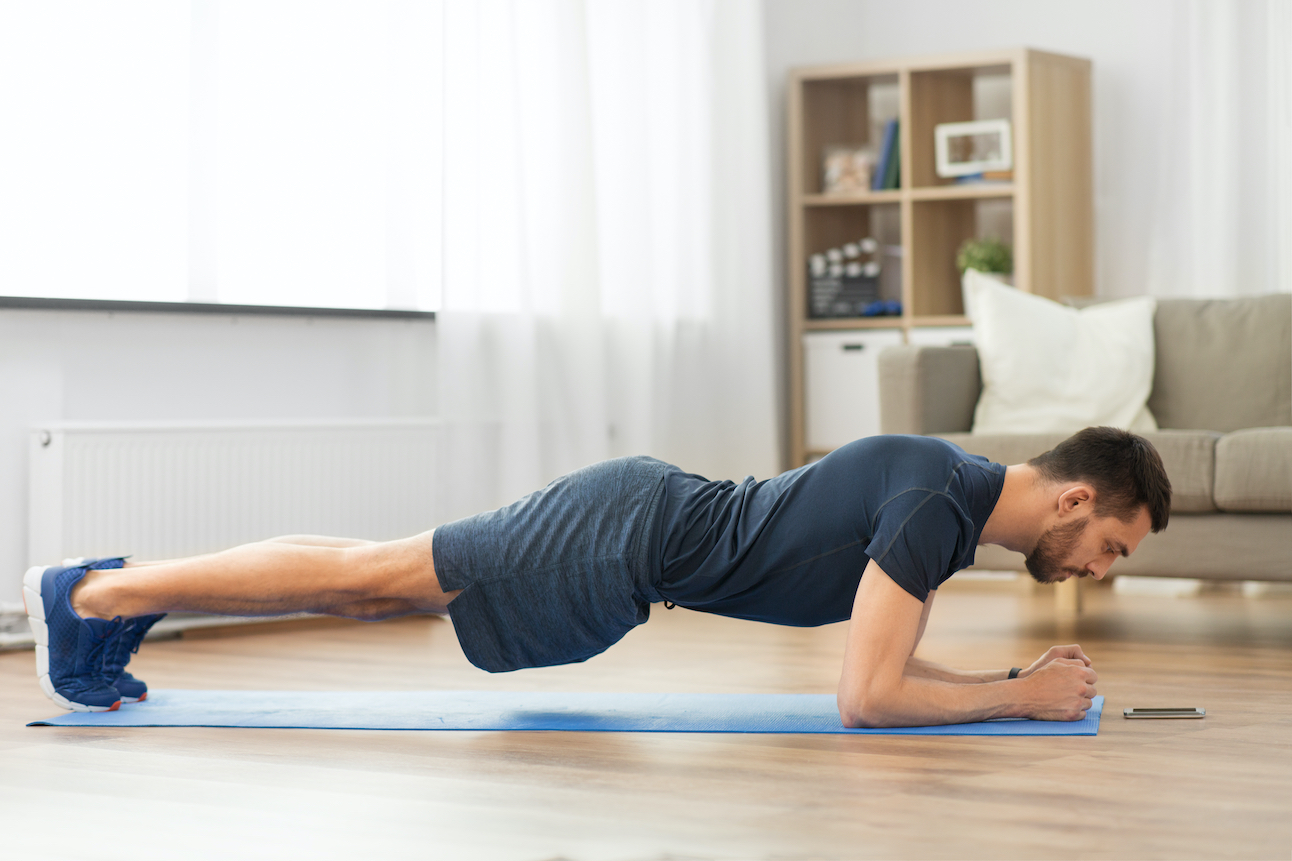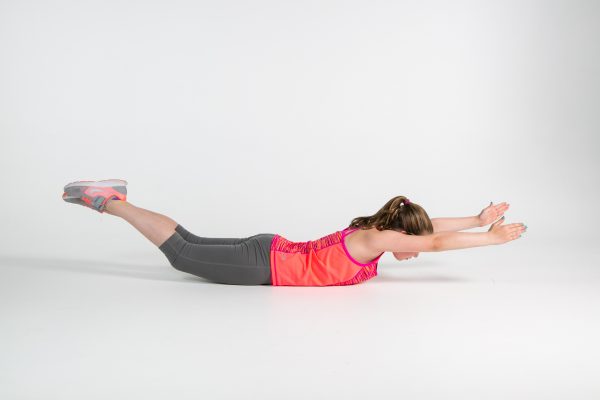Improving Core Strength Important No Matter What Your Age
Question: I’m in my 70s. I keep hearing about the importance of a strong core. What are some easy exercises I can do?Answer: Your core is the stable part of your body that’s more than just your abdominal muscles. It also involves your hips, back and even your shoulders. A strong core helps make everyday movements more efficient and safer—like whenever you reach, carry, walk, bend, or twist. Core strength is crucial for fall prevention. Our bodies constantly have to adapt not only to different surfaces, but to different weighted loads. Adequate core stability and strength can prepare you to better react to these changes and keep you from losing your balance and stumbling. Some floor exercises like the plank and superman poses are great for engaging your core muscles. A plank pose is where you hold a push-up position—with straight arms or resting on your forearms. You might only be able to hold it for 15 seconds at first, but over time you’ll increase the duration. With superman, you lie face down with arms extended overhead, and you lift legs, shoulders, and arms off the floor simultaneously and hold for two to three seconds. With superman, you lie face down with arms extended overhead, and you lift legs, shoulders, and arms off the floor simultaneously and hold (Benjamin Chasteen/Epoch Times) Another type of core workout involves walk-and-carry exercises, also known as “loaded carries.” You hold weights, such as dumbbells or kettlebells, while walking. Carrying a heavy object while you walk engages much of your entire core musculature. Loaded carries can improve everyday movements like holding and carrying groceries, moving furniture, or rising out of bed. Here are three easy-to-do loaded carries to try: Farmer’s Carry: Stand tall and hold either a dumbbell or kettlebell in each hand. (Begin with a moderate weight, like the amount you use to do biceps curls. Keep your arms down at your sides. Engage your core muscles by taking in a deep belly breath and then blowing it out while you tighten your abs. Walk for a minute. (You mimic a farmer carrying pails of milk, hence the name.) Continue to breathe throughout the carry, maintain proper posture, and try to keep the tension in your abs as you move. Rest for 30 seconds, and repeat until you’ve completed two or three sets. Cross-body Carry: This is performed like the farmer’s carry, except you keep one arm straight overhead with the other hand down at your side as you walk. After you have completed your walk, rest for 30 seconds, switch hand positions, and repeat. This completes one set. Do two or three sets. Suitcase Carry: This is also done like the farmer’s carry, except you hold a weight in only one hand while your other hand is free. After you have completed your walk, rest for 30 seconds, switch the weight to the other hand, and repeat the walk to finish one set. Do two or three sets. Howard LeWine, M.D., is an internist at Brigham and Women’s Hospital in Boston and assistant professor at Harvard Medical School. For additional consumer health information, please visit Health.Harvard.edu. (C)2022 Harvard University. Distributed by Tribune Content Agency, LLC.

Question: I’m in my 70s. I keep hearing about the importance of a strong core. What are some easy exercises I can do?
Answer: Your core is the stable part of your body that’s more than just your abdominal muscles. It also involves your hips, back and even your shoulders. A strong core helps make everyday movements more efficient and safer—like whenever you reach, carry, walk, bend, or twist.
Core strength is crucial for fall prevention. Our bodies constantly have to adapt not only to different surfaces, but to different weighted loads. Adequate core stability and strength can prepare you to better react to these changes and keep you from losing your balance and stumbling.
Some floor exercises like the plank and superman poses are great for engaging your core muscles. A plank pose is where you hold a push-up position—with straight arms or resting on your forearms. You might only be able to hold it for 15 seconds at first, but over time you’ll increase the duration.
With superman, you lie face down with arms extended overhead, and you lift legs, shoulders, and arms off the floor simultaneously and hold for two to three seconds.
 With superman, you lie face down with arms extended overhead, and you lift legs, shoulders, and arms off the floor simultaneously and hold (Benjamin Chasteen/Epoch Times)
With superman, you lie face down with arms extended overhead, and you lift legs, shoulders, and arms off the floor simultaneously and hold (Benjamin Chasteen/Epoch Times)
Another type of core workout involves walk-and-carry exercises, also known as “loaded carries.” You hold weights, such as dumbbells or kettlebells, while walking. Carrying a heavy object while you walk engages much of your entire core musculature. Loaded carries can improve everyday movements like holding and carrying groceries, moving furniture, or rising out of bed.
Here are three easy-to-do loaded carries to try:
Farmer’s Carry: Stand tall and hold either a dumbbell or kettlebell in each hand. (Begin with a moderate weight, like the amount you use to do biceps curls. Keep your arms down at your sides. Engage your core muscles by taking in a deep belly breath and then blowing it out while you tighten your abs. Walk for a minute. (You mimic a farmer carrying pails of milk, hence the name.) Continue to breathe throughout the carry, maintain proper posture, and try to keep the tension in your abs as you move. Rest for 30 seconds, and repeat until you’ve completed two or three sets.
Cross-body Carry: This is performed like the farmer’s carry, except you keep one arm straight overhead with the other hand down at your side as you walk. After you have completed your walk, rest for 30 seconds, switch hand positions, and repeat. This completes one set. Do two or three sets.
Suitcase Carry: This is also done like the farmer’s carry, except you hold a weight in only one hand while your other hand is free. After you have completed your walk, rest for 30 seconds, switch the weight to the other hand, and repeat the walk to finish one set. Do two or three sets.
Howard LeWine, M.D., is an internist at Brigham and Women’s Hospital in Boston and assistant professor at Harvard Medical School. For additional consumer health information, please visit Health.Harvard.edu.
(C)2022 Harvard University. Distributed by Tribune Content Agency, LLC.












